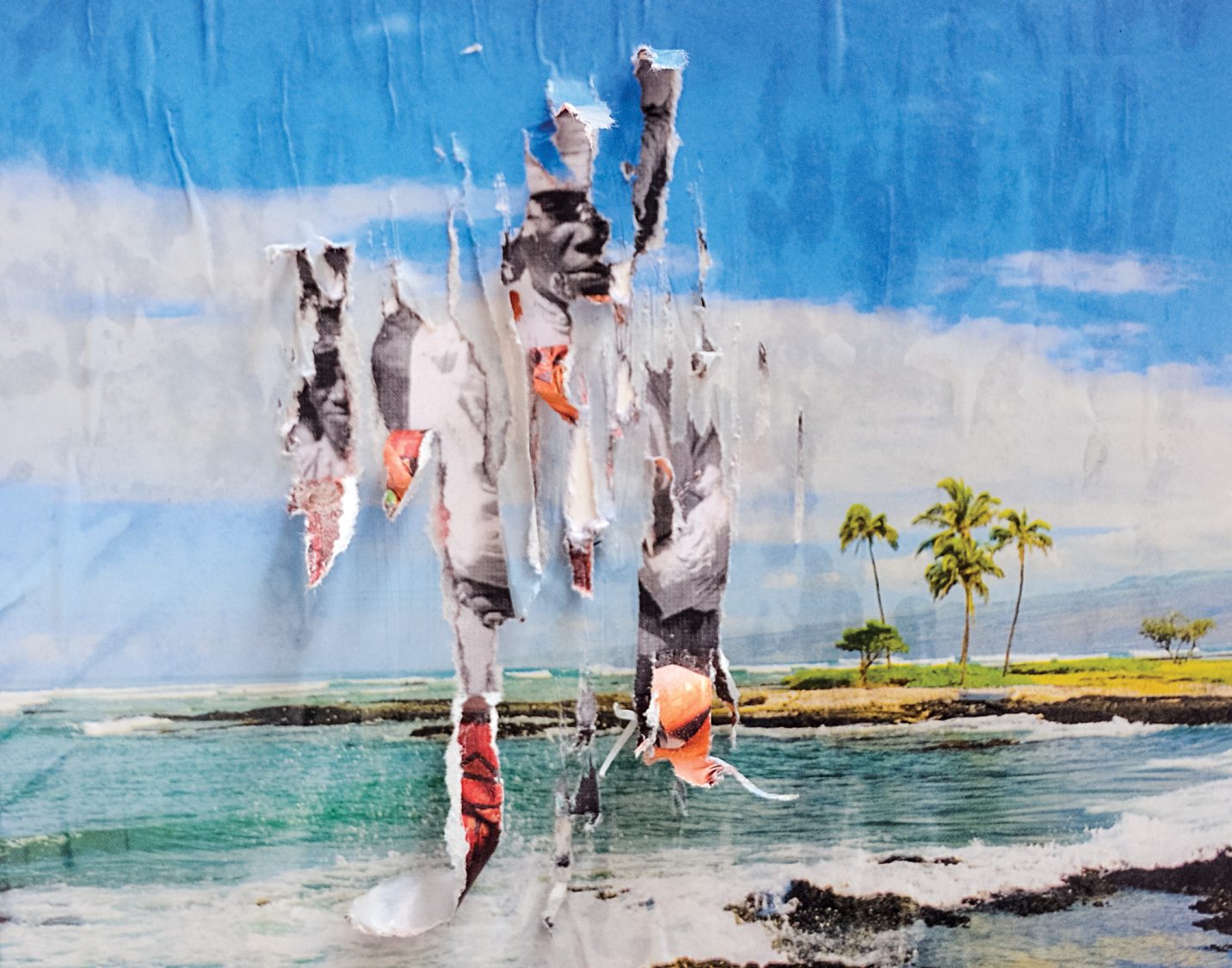We may call it different names—peace, or awakening, or enlightenment, even love—but what most of us are looking for is happiness: deep, abiding fulfillment and completion. The problem is that we’re looking for it in the wrong place. We’re looking in the places where society or our conditioning tells us to look—in the fulfillment of our desires. But that is not where true happiness is found.
The Buddha was quite specific about the quality of mind that keeps us bound to the long journey of samsara, our endless pursuit of happiness: “I don’t envision even one other fetter—fettered by which beings go wandering and transmigrating for a long, long time—like the fetter of craving.” So what is the craving the Buddha says binds us to samsara—the cycle of birth and rebirth—and how do we experience it in our lives?
“Craving” is the word we use to translate the Pali word tanha, and the root meaning of tanha is “thirst.” Sometimes this is expressed as “the fever of unsatisfied longing.” When we think of thirst or the fever of unsatisfied longing, it gives us a very visceral sense of what craving is like. Often the words “craving” and “desire” are used interchangeably, as I will use them here. But “desire” has many meanings: it can be the motivation to do something, to accomplish something—a desire for enlightenment, perhaps, or to become more compassionate, or to serve. That is a very different mind state from the mind state of craving. The desire of craving—the thirst, the fever of unsatisfied longing—is rooted in greed and attachment.

If we want to free ourselves from the grip of this fever, we have to understand where to look, where to investigate. The Buddha pointed to particular kinds of craving that misdirect us in our search for true happiness, including the craving for sense pleasures and the craving for becoming.
The craving for sense pleasures is the most obvious form of craving and the most familiar. This is the desire to experience pleasant sights and sounds and smells and tastes, pleasant sensations in the body, and pleasant mind states. (In Buddhism, the mind is generally considered the sixth sense.) Our engagement with desire for sense pleasures is just our usual engagement with life, with the world—wanting and enjoying what’s pleasurable and trying to avoid what’s unpleasant or disagreeable.
To us, this seems so natural, so normal. But here is where the Buddha begins a very revealing analysis of our enmeshment with the world of sense pleasures. He didn’t condemn sense pleasures as sinful; rather, in a systematic way he asked basic questions about the kinds of experiences we find enjoyable. His first question was What is the gratification in the world? As a young prince, before he left home on his quest for enlightenment, the Buddha thoroughly enjoyed all the sense pleasures. Then at one point, the thought came to him that whatever pleasure and joy there is in the world, that is the gratification in the world. If there were no pleasure and joy in the world, human beings would not become enamored of samsara. It is precisely because there is joy and pleasure in this realm that we desire and crave sense pleasures. If they weren’t enjoyable, we wouldn’t crave them.
If you examine your own life, as the Buddha examined his, what is the gratification? What experiences of body and mind do you become enamored of? What do you desire? When we look within ourselves and at the world around us, it’s evident that cravings and gratifications vary widely in intensity and frequency. At one end of the spectrum are obsessive cravings that can become all-consuming: addiction to food or sex or alcohol or drugs or success or power or fame or wealth or possessions or comfort—even to love.
If there were no pleasure and joy in the world, human beings would not become enamored of samsara.These are strong, universal, driving forces in our lives, and in many ways our culture feeds them. I once saw in a store window in New York a sign that said: “Don’t let desire pass you by.” And back in the day when magazines carried cigarette advertisements I saw an ad showing a handsome man and a beautiful woman with cigarettes in their hands. The slogan read: “I don’t let anything stand in the way of my pleasure.” We’ve been getting messages like these all our lives.
Many of our desires are not obsessive, but they still may be a driving force behind many of our actions. The object of craving or desire can be small, even insignificant, but the power of desire is deeply rooted in our minds, almost like a primal energy. Momentary or seemingly trivial desires can, through repetition, strengthen into habits. We go from “I want this” to “I need this” to “I must have this.”
I really look forward to my cup of coffee in the morning, to get the day going. When I was doing a self-retreat at home one time, I got up every morning and enjoyed the sense pleasure of a good cup of coffee. Then one morning the coffee grinder didn’t work. What was the first word that came to mind? Disaster! And I meant it. In the realm of human experience that certainly wasn’t a disaster, but to my craving mind it felt like one.
Instances of craving and desire like this are so familiar to us that they’re mostly invisible. They are so much a part of who we take ourselves to be that we don’t even notice these deeply conditioned patterns until we bring the power of awareness to them. That is why the Buddha said he didn’t see any fetter as strong as craving that binds us to the wheel of samsara.

The power of mindfulness is that we can begin to notice where craving arises in daily life. We can start by really paying attention to the gratification we feel in experiencing different sense pleasures. What experiences give you moments of delight? What do you become enamored of? For me it was that early morning coffee. For you it might be lunch or a cup of tea or a hot shower. When you finally stretch out in bed at night, and the body feels “Ahhhh,” that’s a sense delight, a sense pleasure.
Whenever you notice the pleasure associated with these experiences, explore further and see if there’s a subtle level of craving for them in your mind. I noticed this on retreat while I was doing walking meditation. I could be grounded in my body and fully aware of each movement, and then when the lunch bell rang, I might continue walking just as slowly, but I could feel my mind being pulled into the lunch room, anticipating the enjoyment of the meal.
We can investigate that same conditioning in noticing our enjoyment of pleasant fantasies. It’s so easy to be caught up in pleasant thoughts, to be carried away by enticing sexual fantasies or food desires or fantasies about relationships. But at some point in our exploration of this realm of craving and desire, we might resonate with the Buddha’s words: “Whatever gratification there is in the world, that I have found.”
We’ve all had innumerable pleasurable experiences in the body and the mind. Maybe you’re still looking for some new taste, new sensation, new thought. But the Buddha didn’t stop there. The desire for sense pleasures and the gratification we get from them is just the first step in becoming aware of what moves us in our lives. “I then set out seeking the dangers of the world,” he said. “Danger” here is a translation of the Pali word adinava, which can also mean a drawback or disadvantage or the downside of things.
So what is the downside of gratification in the world? What are the drawbacks? The Buddha said, “Whatever dangers or downsides there are in the world that I have also found, namely that the world is impermanent and because of that, ultimately unreliable, subject to change.” We all know this conceptually. But we’re not living this awareness. If we were, we wouldn’t get attached to things, because we would know that whatever we crave or desire and become attached to is impermanent and is going to change. But how many of us, when we’re in the midst of enjoying sense pleasures, have enough interest to ask ourselves, “What is the downside of this? What is the drawback?”
It’s good to reflect on the drawbacks of sense pleasures so we can integrate that understanding into the choices we make. But what are the drawbacks? For one thing, sense pleasures do not deliver on their promise. We’re enamored of them because we think they’re going to make us happy. And they do for a while. But the happiness we feel is short-term and comes not because of anything inherent in the sense objects but because of the pleasant feelings we associate with them.
Sense pleasures are continually changing, continually disappearing. So we go after another one, then another one, and then another, each time anticipating the next one until all too soon our lives are at an end. We chase after the illusory happiness of sense pleasures, but unless we start paying attention to the drawbacks, we’re just living in the forward momentum of craving without ever coming to a place of completion, of contentment, of real peace. How much of your life and energy do you want to spend in this endless pursuit?
So the first drawback of relying on the gratification of sense desires for our happiness is that it doesn’t actually accomplish our aims. The second danger or drawback is that when craving becomes a strong or excessive force, it often leads us to very unwholesome actions that create unwholesome karma, bringing suffering to ourselves and others. One time I went to a teaching on sense desires by Sayadaw U Pandita, one of my Burmese teachers. He went on and on for at least ten minutes in Burmese. Then the translator summed up what he had said: “Lust cracks the brain.”
Just four words, but absolutely true. Whether it’s sexual lust or lust for anything else, it really does crack the brain. Lust is a powerful force in the mind and in our lives. It takes a lot of interest and even courage to look deeply into your heart and mind to see these patterns so that you won’t have to go through life on the momentum of habitual conditioning. We’ve all been conditioned in so many ways, some of them wholesome, some of them not. The only way to become free is to become aware, to really see that This is leading to a good result, or This is not so skillful, not wholesome.

The second type of craving the Buddha identified is more subtle than the craving for sense pleasures and mostly goes unnoticed. He called it craving for becoming—the basic urge or desire to become this or that. One familiar manifestation of the craving for becoming is the obsessively planning mind. We get caught up in endless planning, in imagining ourselves in some future situation and then engaging in all the thoughts and actions that will get us there. Indeed, a good part of our mental activity is making mental creations of a future self: I’ll do this, I’ll go there, I’ll become that. I’m not suggesting that all planning is unskillful, but being lost in fantasies about our future is very different from mindfully planning for things that need to be done.
Another way to identify the craving for becoming is to notice the many times expectation arises in your mind. One of the biggest hindrances in both meditation practice and daily life is being caught up in expectation. In meditation, when you’re being with your moment-to-moment experience, notice when you’re leaning into the next moment energetically. You’re with this breath in order to get to the next breath, or with this sensation in order for it to become something else. It’s a very common pattern, thinking that the next moment somehow is going to resolve everything. We forget that the next moment is just as impermanent as this moment, so it’s not going to offer resolution of anything.
When there is expectation, we’re hoping that something we want will happen and we fear that it won’t.A big problem with expectation is that it inevitably brings agitation to the mind. Certain kinds of expectations are so seductive because they masquerade as dharma aspirations. But there’s a big difference between aspiration and expectation. Aspirations can inspire us. We might have an aspiration for awakening, for example, or an aspiration to become more compassionate. That sets a direction for us. Aspiration can be beautiful and ennobling. Expectation, however, leads us into the agitation of hope and fear. When there is expectation, we’re hoping that something we want will happen and we fear that it won’t. That’s a very different experience from aspiration.
Expectation also feeds the comparing mind. There’s a big difference between being inspired by someone else’s life or practice and getting caught up in comparing and self-judgment. Years ago, Sayadaw U Pandita came to the Insight Meditation Society to teach a three-month course. He was a very demanding teacher, and it was a high-pressure retreat. We had to report on how long we practiced: the aim was 14 hours of sitting and walking a day. A lot of stuff was coming up for me during the retreat, but when I looked around, it seemed clear that other meditators were doing well while I was struggling. Comparing myself with them brought more suffering and self-judgment. Then one day, I was walking outside and saw that the spring flowers were coming up. I noticed that some flowers were already blooming, while others had buds that hadn’t yet opened, and still others were just poking out of the earth. In that moment, I realized that like the flowers, we are all unfolding in our own way, in our own time. And one flower doesn’t compare itself to the others: “Oh, that one has bloomed already. Why haven’t I?” Nature can be a great teacher.
One of the easiest ways to notice the craving for becoming and leaning into the next moment is to become aware of the very common feeling of rushing. When we’re rushing, our mind is ahead of our body, energetically pushing us forward into whatever we think we should be doing. The phenomenon of rushing has nothing to do with speed. You can be rushing while moving very slowly. You can be leaning into the next moment while sitting. When we’re rushing, we’re forgetting the central understanding of practice—that liberation is not about getting anywhere, not about craving, not about holding on or clinging. It’s all about letting go, and we can let go in any moment. The Buddha gave very specific instructions for this; they are really instructions on how to live an awakened life: “Not reviving the past. Not hoping to be in the future. Instead, with insight, see each arising state, not craving after past experience, not setting one’s heart on the future ones, not bound up in desire and craving.”
There is a traditional meditation instruction: Notice when your mind is reviving the past or longing for something in the future; then, with each arising state come back to the present, even if just for short periods of time.
It is said that on the morning the Buddha experienced full enlightenment, he thought: “Realized is the unconditioned; achieved is the end of craving.” He is saying so clearly that the nature of the liberated mind is freedom from craving—from desire for sense pleasures and craving for becoming. And we can practice this in any moment and aspire to its complete fulfillment.
This is true happiness. It is not beyond reach.
♦
This article was adapted from a talk given at Insight Meditation Society in Barre, Massachusetts, in February 2018.
Thank you for subscribing to Tricycle! As a nonprofit, we depend on readers like you to keep Buddhist teachings and practices widely available.
